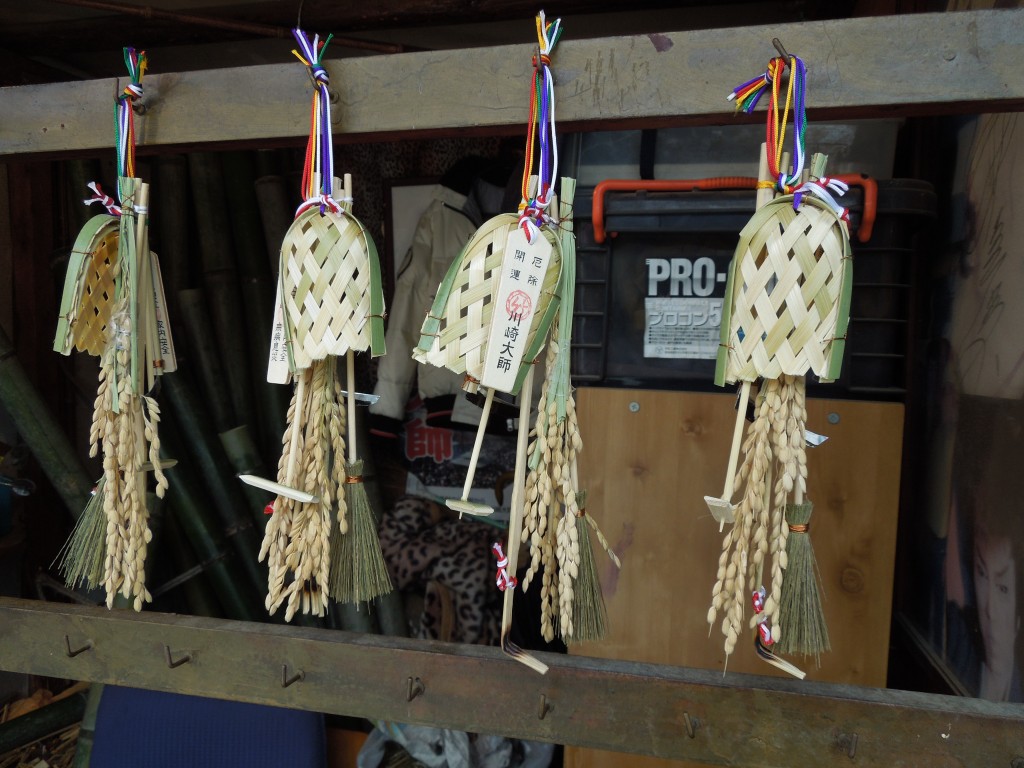
Rice grain is usually associated with Shinto (Inari is the kami of 'ine', rice), but here it's used as an emblem for the Shingon temple of Kawasaki Daishi
On a recent visit to Yokohama, I happened to visit the huge Shingon temple of Kawasaki Daishi and was struck by some of the syncretic elements on show.
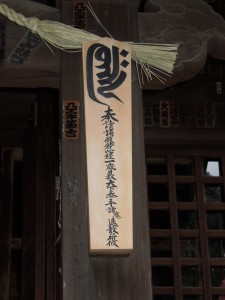
Sanskrit in a Shinto shrine? What's that all about? Only explicable through the Indian roots of Shingon Buddhism...
Shingon, it is often said, is the closest Buddhist sect to Shinto. It shares a reverence for nature and sacred mountain tops. Its supreme deity, Dainichi Nyorai, encapsulates a kind of pantheism through being the “Central Buddha of the Universe, the Cosmic Buddha, the supreme deity of Esoteric Buddhism” (see onmark).
Shingon syncretism started with its founder Kukai (aka Kobo Daishi, 774-835). According to the founding legend of Mt Koya, the Shingon headquarters, a local kami disguised as a hunter told his black and white hunting dogs to lead the priest to the hidden valley in Wakayama where the monastery now stands. Thereafter Kukai made a point of honouring the mountain kami.
In the combinatory thought of honji suijaku (essence-trace) the two religions were joined at the hip, and for many believers Dainichi (literally Big Sun) was the universal essence of Amaterasu, the Japanese sun goddess.
With the Meiji Restoration in 1868, Ito Hirofumi and other politicians seized on Shinto as an ideological support for the emperor system. Accordingly they artificially separated two faiths that for over 1200 years had become fused into one.
Though the separation caused confusion and conflict, it was forced through and Buddhist elements were removed from shrines. But in temples kami worship seems to have carried on to some extent. Syncretic elements are still strong in the Shingon, Tendai and Nichiren traditions, though not in the Pure Land sects where kami worship is seen as irrelevant.
With the passage of time, it seems that the Meiji construction of an emperor-centred Shinto may be losing force and that syncretism is on the way back. It’s a welcome development. There are an increasing number of joint projects, and interestingly the only Shinto shrine in France is in the grounds of a Shingon temple. Who knows how things will be after another hundred years?
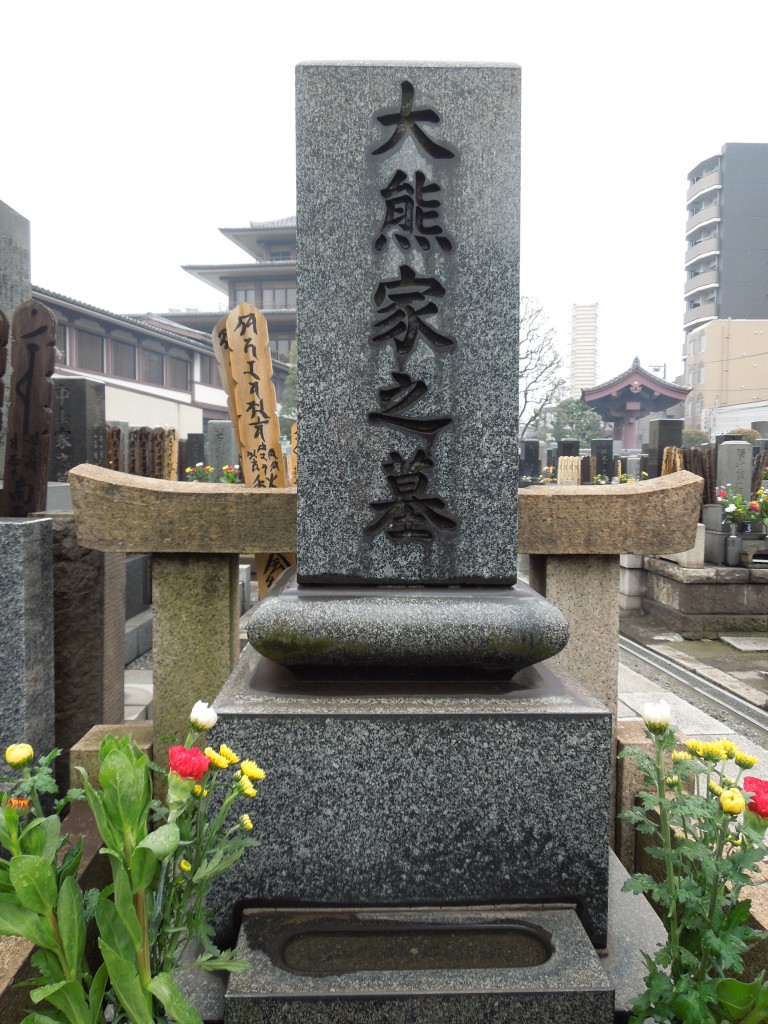
In the temple graveyard a stone torii can be seen, marking the divide between this world and the other - but which other? Shinto or Buddhist?
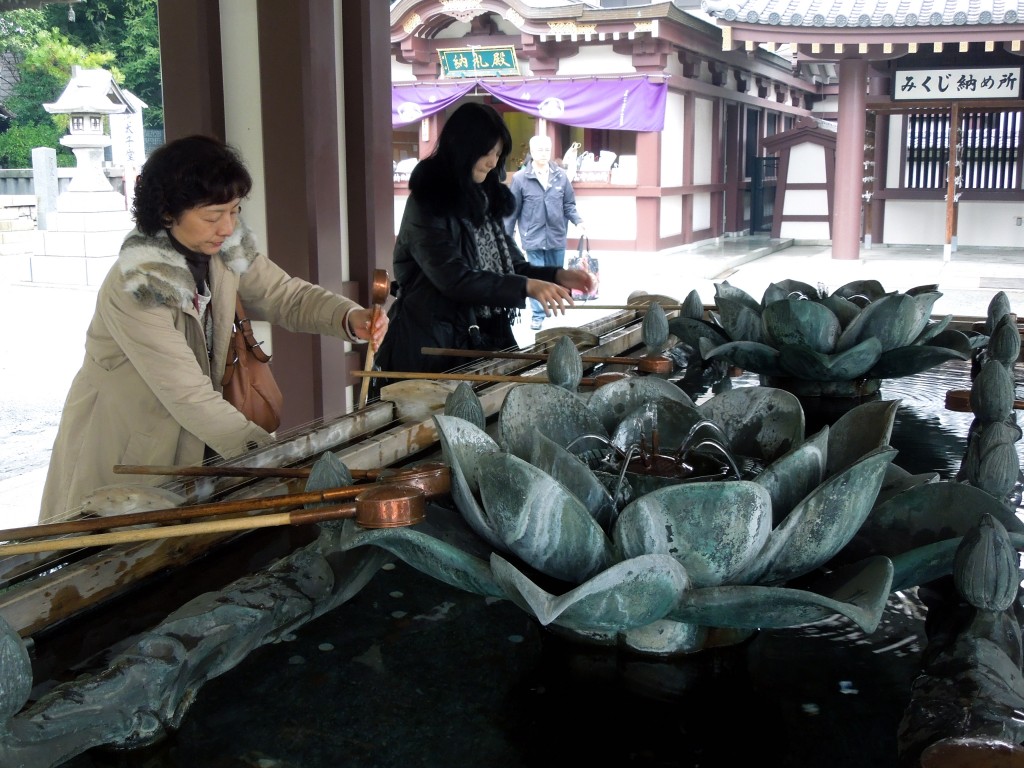
A syncretic water basin with lotus blossom, where worshippers purify themselves Shinto-style
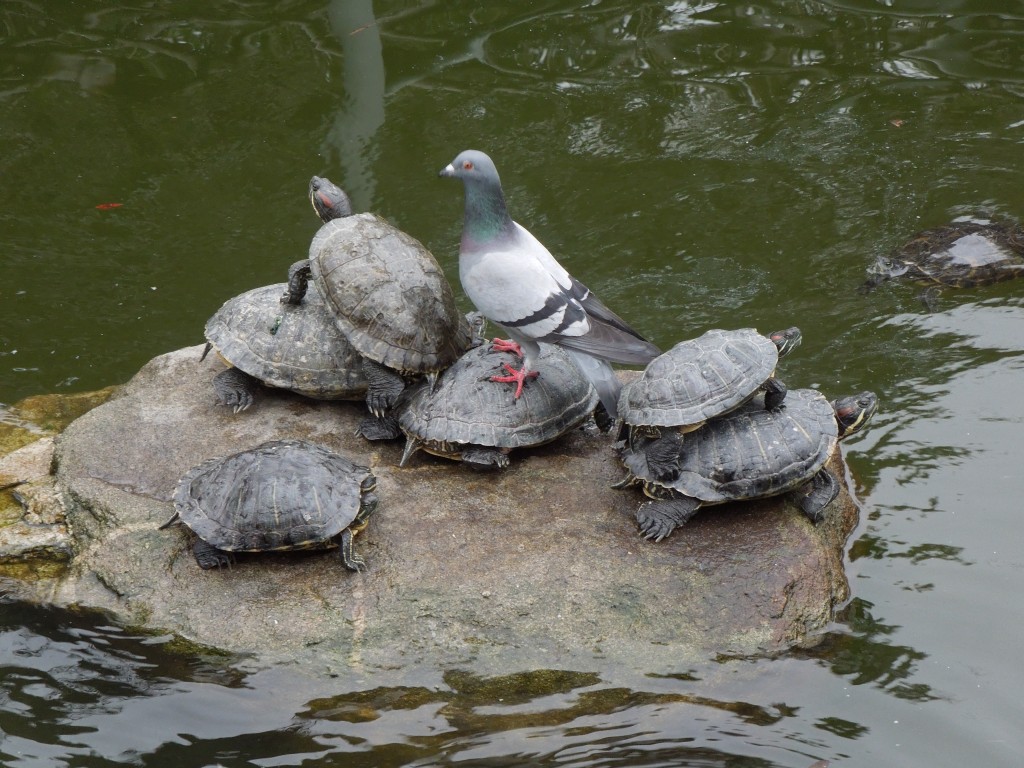
Syncretic animal life in the temple's lotus pond too !

Leave a Reply